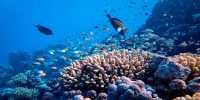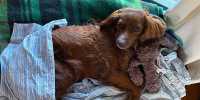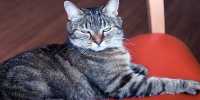Scientists have finally uncovered identify of a six-foot bird that lay eggs eaten by Australia’s earliest humans, ending the 50,000-year-old Great Egg Controversy. The extinct megafauna Genyornis was responsible for the ancient humans’ feast, which came from a group of birds known as the dromornithids or mihirungs, who are also known as the “devil ducks of doom” due to their resemblance to waterfowl and massive size. Genyornis, popularly known as “Thunder Bird,” was a two-meter (six-foot) tall creature with lengthy legs and unexpectedly small wings. These birds are said to have strutted across Australia in groups, and despite the fact that a six-foot demon duck is pretty terrifying, they were most likely vegetarians.
Instead, we humans were the ones performing the devouring, as evidenced by the discovery of charred bits of old eggshells a few years ago. The finding of the shells, however, ignited dispute about which bird lays the eggs our forefathers ate. What difference did it make? Because the answer might reveal if humans were to blame for the extinction of one of the suspects: Genyornis, which was previously thought to be the egg layer.
After a study suggested that the burned shells’ forms and thickness made Progura, or “giant malleefowl,” a more plausible candidate than Genyornis, a second extinct species – Progura, or “giant malleefowl” – was floated as a contender for the egg layer. These birds, which weighed roughly five to seven kilograms, were more akin to turkeys (11 to 15 pounds). The authors of a recent article published in Proceedings of the National Academy of Sciences only have fossilized eggshells to work with in order to distinguish between the two, but thankfully, these ancient calcium carbonate chick casings have fared well over the previous 50,000 years.
In a statement, senior co-author Prof Matthew Collins of the University of Cambridge’s Department of Archaeology stated, “Time, temperature, and the chemistry of a fossil all govern how much information we can gather.” “Eggshells are made up of mineral crystals that can firmly trap certain proteins, retaining biological data in the harshest of settings for millions of years.”
The researchers were able to extract proteins from the ancient eggshells and compare them to those of live species despite the lack of genetic information on the shells. This comparison demonstrated that whoever placed the eggs developed before Progura, implying that Genyornis was the one who laid the eggs. When it comes to how our forefathers may have pushed the species over the line and into extinction, it appears that stealing, not butchery, was more likely to blame.
“The archaeological record has no indication of Genyornis butchery.” Eggshell pieces with distinct burn patterns associated with human activity, on the other hand, have been discovered in various locations across the continent,” said senior co-author Prof Gifford Miller of the University of Colorado. “This suggests that the early people did not necessarily chase these big birds, but raided nests and stole their giant eggs for sustenance on a regular basis.” Human overexploitation of the eggs may have led to the extinction of Genyornis.”















